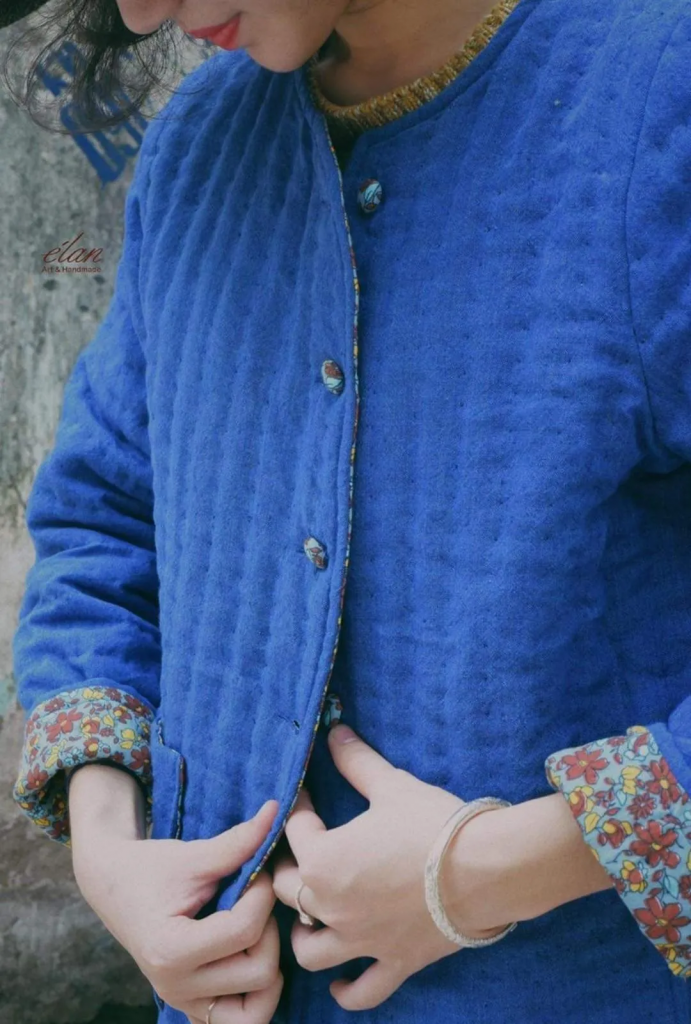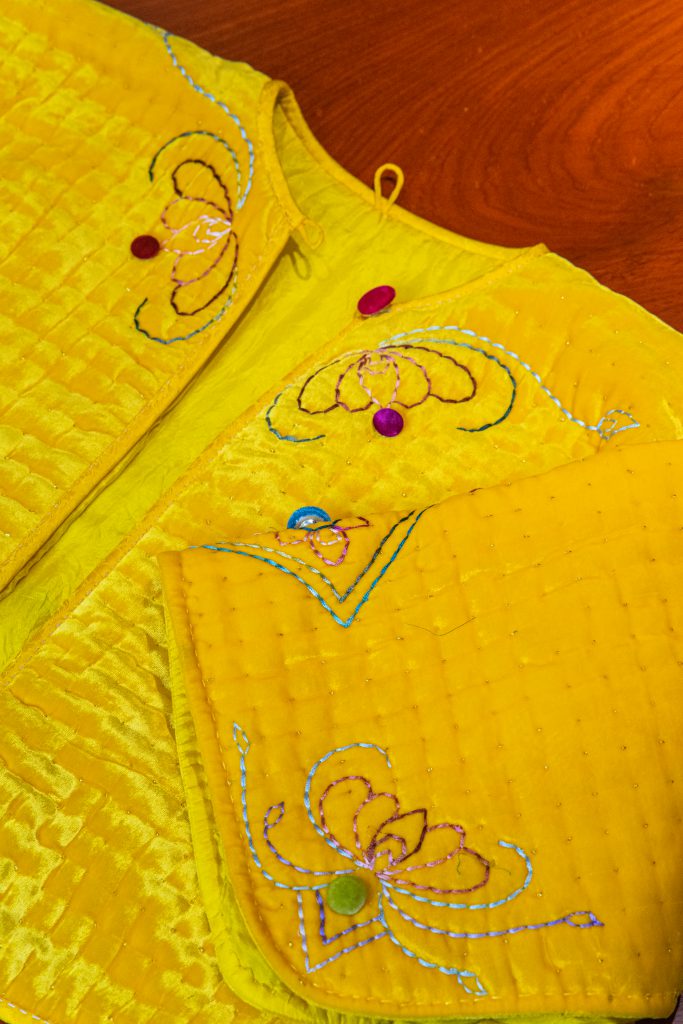Story XUAN THU
Photos KHOA TRAN, INTERNET
Many Hanoians fondly Recall the ao chan bong (cotton-padded jackets) that motheRs and grandmothers quilted every winter. Designer Xuan Thu explores the deep connection between Hanoi and this jacket.

Woven into history
When the first ao chan bong, or cotton-padded jacket, was developed in Vietnam is not clearly recorded in historical documents. All we know is that ever since the villagers of Trat Cau (Thuong Tin district) learned the craft of cotton batting and making cotton quilts, the cotton-padded jacket gradually became popular around the ancient Thang Long capital area. The emergence of these jackets helped the inhabitants of ancient Thang Long, from nobility and officials to the common people and poor laborers, to withstand and overcome the chilling winds of winter.
“Many spring’s news traveled back and forth
this spring’s devoid of any sign from you
In vain I’ve hoped for letters, seeing geese in vain
I’ve made a quilt at the first frost”
(Trải mấy xuân tin đi tin lại
Tới xuân này tin hãy vắng không
Thấy nhạn luống tưởng như phong
Nghe hơi sương sắm áo bông sẵn sàng)
Excerpt from the poem The Song of a Soldier’s Wife – translated by poet Doan Thi Diem)
Initially, in terms of technique, the cotton-padded jacket was hand-sewn using a different style for each social class. The ao chan bong of the impoverished working class was simply made from brown fabric; for nobility and officials, the cotton jacket was made from velvet or silk for the outer layer, and even more luxuriously, from brocade fabric.
Later on, tailors were able to use sewing machines to connect the three layers together with skillful stitching. The points on the fabric surface that sagged were the cotton quilting buttons, evenly spaced as if meticulously replicated. The sinking depth of each cotton quilting button depends on each type of fabric sewn along with the smooth cotton layer in the middle.

The nostalgic cold of Hanoi
During every Tet holiday, I still remember that my grandmother would wear a cotton-padded jacket and a black velvet headscarf over a white blouse and a plum-colored woolen sweater. She finished the outfit with wide-leg pants and lacquered wooden clogs on her feet, in the prominent dressing style among Northern women in cold weather.
Later on, in the subsidy period of the 1980s, ao chan bong were no longer made from black velvet material but instead from cotton fabric, blended nylon fabric or even coarse canvas fabric.
For children, the cotton-padded jacket – though somewhat heavy – became a special warming garment. In the short story Gio lanh dau mua (Cold Winter Wind), author Thach Lam wrote about the generous heart of little Son, who gave his cotton jacket to Hien in the freezing winter. Back then, Hanoi children were dressed by their parents in new ao chan bong for Tet festivities.
Therefore, the 7x and 8x generations today remember the cotton-padded jacket as a symbol of the old subsidy period in Hanoi and of special Tet gatherings in the cold. Remembering the capital city’s weather, Hanoi-born People’s Artist Le Khanh shares: “Hanoi’s Tet is cold unlike any other country. Therefore, only the short cotton jacket and velvet scarf can create a beautiful traditional Tet costume for all eras.”
Today, the cotton-padded jacket is still handmade at all stages. Besides its distinctive beauty, the jacket is also extremely convenient and can be worn on both sides to match different outfits on various occasions. Also, as the handmade stitching is quite meticulous, the cotton-padded jacket has become a luxury item for young people and the middle-income class. When Tet comes, the cotton-padded jacket is taken out and subtly combined with the traditional ao dai to remember Hanoi and the winters of the past.










